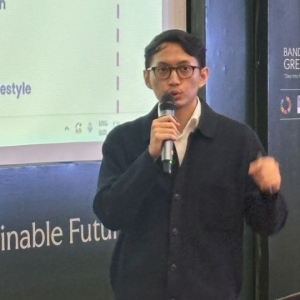Green finance and sustainable investment are closely related to capital allocation. Carrying these two principles can help increase cash flow and corporate governance.
Dr. Haslindar Ibrahim, a respected lecturer at Universiti Sains Malaysia, shared her insights as a guest lecturer at the SBM ITB on Thursday (25/7). She discussed the exploration of green finance opportunities through sustainable investment strategies. According to Dr. Haslindar, the scale of global green bonds and loans is on the rise in Europe and the Asia Pacific region. This surge in green financing fosters increased finance governance, leading to a shift in local social cultures related to financial aspects.
In the ASEAN scope, Haslindar described that the Green Finance instruments usually finance development projects without collateral, loans, and Sukuk. The main aspects driving sustainable investment and Green Finance are attention to the impact of the natural environment and biodiversity, applicable regulations and policies related to the environment, consumer demand to increase preferences in sustainable products and services, and corporate social responsibility by considering the impact and benefits of the company in the long term.
Dr. Haslindar highlighted the transformative benefits of implementing Green Finance and sustainable investment. These principles can significantly reduce the carbon footprint and degradation of the natural environment, enhance welfare and social equity, and regulate Environmental and Social Governance aspects, making financial investments more resilient. Moreover, green investment can potentially yield long-term financial returns and mitigate financial risks with negative impacts.
Dr. Haslindar underscored that the benefits of Green Finance are not just theoretical. Many countries have experienced them. A significant 88% of investors in Green Finance have reported better-than-expected returns on their financial portfolios, exceeding their financial expectations.
Globally, 50% of Bond uses the Green Bond system, which has more profitable returns. This promising trend in using Green Finance points to a future of business innovation, financial instrument development, and integration with Artificial Intelligence. It also signifies the growth of green financial quality in developing countries and the development of renewable and improvised technologies in the form of Environmental and Social Governance.
According to Haslindar, the Green Finance aspect in Indonesia is quite good. However, there still needs to be a development that pays more attention to the impact of the natural environment and climate change. Therefore, there needs to be robust financial regulation to improve the Green Finance aspect, accompanied by sustainable corporate investment by paying attention to Environmental and Social Governance.







